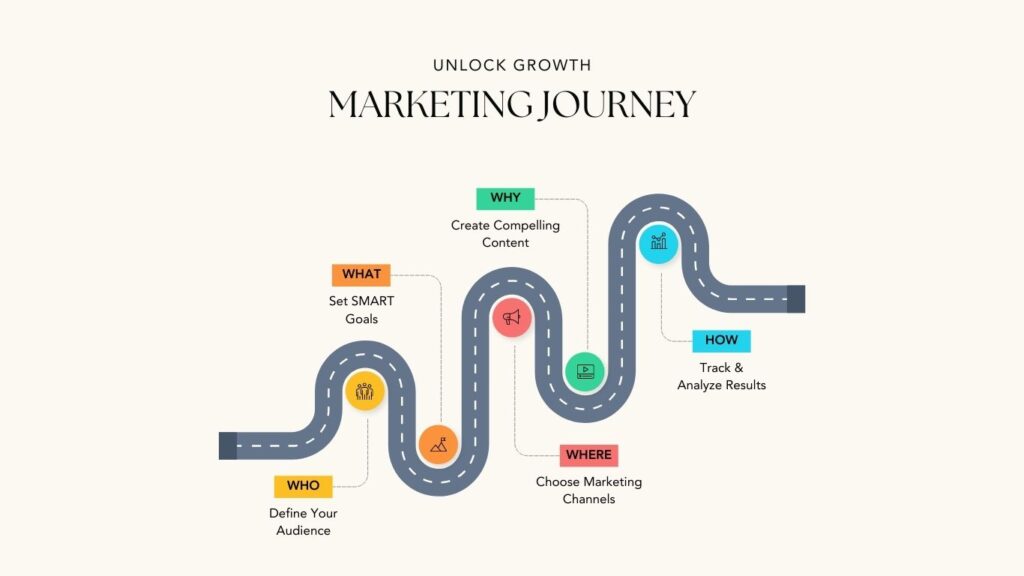When building a solid SEO strategy, an SEO blueprint serves as your guide to success. Think of it as a detailed plan that outlines every step, from setting goals to tracking results. A well-crafted SEO blueprint ensures that your efforts are organized, effective, and focused on long-term growth. In this blog, we’ll break down the process of creating an SEO blueprint straightforwardly and practically.
1. Set Clear Goals and Objectives
Before you start, you’ll need to define your SEO goals. What do you want to achieve? Is it more website traffic, better search rankings, or increased conversions? Setting clear objectives will help shape your entire blueprint and keep you focused. For example, if you want to rank for specific local keywords, your blueprint must prioritize local SEO tactics.
2. Conduct a Website Audit
Next, perform a thorough website audit to identify your site’s strengths and weaknesses. This includes checking for technical issues like slow loading times, broken links, and crawl errors. Tools like Google Search Console, Screaming Frog, and SEMrush are great for diagnosing issues and opportunities for improvement. The audit serves as the starting point, revealing what needs to be fixed before moving forward.
3. Do Keyword Research
Keyword research is the backbone of any SEO blueprint. Use tools like Ahrefs, Moz, or Google Keyword Planner to find relevant keywords that match your audience’s search intent. Choose a mix of short-tail and long-tail keywords, focusing on those with high search volume but low competition. Organize your keywords into clusters to guide your content creation and on-page SEO efforts.
4. Plan Your Content Strategy
Based on your keyword research, create a content plan. Decide what types of content you need—blogs, articles, videos, or infographics—to target your selected keywords. Ensure that every piece of content is valuable, addresses user intent, and is optimized for SEO. Content is key to attracting and engaging your audience, so this step is crucial for success.
5. Optimize On-Page SEO
On-page optimization involves making sure each page on your site is properly optimized. This includes optimizing meta titles, descriptions, headers, and URLs with your target keywords. Also, focus on creating user-friendly content that’s easy to read and navigate. Remember to add internal links to help search engines understand the structure of your site.
6. Develop a Link Building Strategy
Building high-quality backlinks from reputable sites is a key element of your SEO blueprint. Identify industry-relevant websites and reach out to them for guest blogging, partnerships, or link exchanges. The more high-quality backlinks you have, the more authority your site will gain in the eyes of search engines.
7. Implement Technical SEO Fixes
Technical SEO is essential for ensuring your site is crawlable and indexable. Check for issues like duplicate content, improper redirects, or missing alt tags for images. A well-structured sitemap and clean URL structure will help search engines understand and rank your site effectively.
8. Monitor and Adjust Your Strategy
SEO is an ongoing process, and your blueprint needs to be flexible. Use analytics tools like Google Analytics and SEMrush to track performance, identify trends, and measure results. Regularly review your blueprint and make adjustments based on data and performance metrics.
9. Create a Timeline and Checklist
To stay organized, create a timeline with specific deadlines for each task in your SEO blueprint. Use a checklist to track progress and ensure nothing falls through the cracks. This will help keep you accountable and maintain consistency throughout your SEO efforts.
Final Thoughts
An SEO blueprint is more than just a plan; it’s a roadmap that guides every aspect of your SEO efforts. By following the steps outlined above, you’ll have a structured approach that helps you stay focused and achieve your SEO goals. With time, patience, and regular optimization, your SEO blueprint will lead to improved search rankings, more traffic, and increased online visibility.


